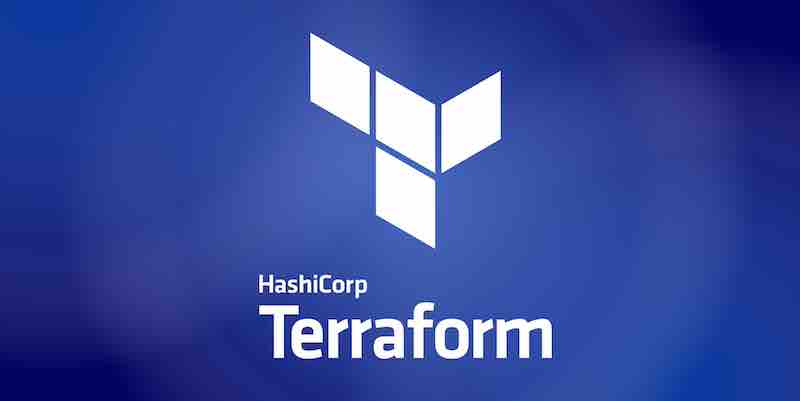Terraform: A Basic Guide with Code Samples

Terraform, developed by HashiCorp, is a widely-used Infrastructure-as-Code (IaC) tool that allows developers and system administrators to define, provision, and manage cloud infrastructure using a declarative configuration language.
What is Terraform?
Terraform is an open-source tool that codifies APIs into declarative configuration files. These files can then be shared amongst team members, treated as code, edited, reviewed, and versioned.
Key Concepts:
- Providers: Terraform uses providers to interact with cloud services. Each provider offers a set of resource types and understands how to create, read, update, and delete those resources on the cloud platform.
- Resources: In Terraform, a resource represents a piece of Infrastructure in your provider, such as a virtual machine, network interface, or block storage.
- State: Terraform maintains a state file that represents the current Configuration of the Infrastructure. This state is used to reconcile and make changes to the Infrastructure.
- Modules: Modules in Terraform are containers for multiple resources. They’re used for creating reusable components.
Getting Started with Terraform:
1. Installation:
Download the appropriate package from the Terraform website to install Terraform, and include it in your system’s PATH.
2. Basic Configuration:
Let’s start with a simple example of creating an AWS S3 bucket using Terraform:
provider "aws" {
region = "us-west-1"
}
resource "aws_s3_bucket" "my_bucket" {
bucket = "my-unique-bucket-name"
acl = "private"
}In this example:
- We specify the
awsprovider and set the region. - We define a resource for the S3 bucket.
3. Initializing and Applying Configuration:
Once you’ve written your Configuration, navigate to the directory containing the configuration file and run:
terraform initThis command initializes Terraform in the directory, downloads the necessary provider plugins, and prepares Terraform to manage the Infrastructure.
To apply the Configuration, run:
terraform applyTerraform will provide a plan for creating, modifying, or deleting resources. Confirm the changes, and Terraform will adjust the Infrastructure to match the Configuration.
4. Destroying Infrastructure:
To destroy the resources managed by Terraform:
terraform destroyThis command will provide a plan of resources to be deleted. Confirm the deletion, and Terraform will destroy the specified resources.
Advanced Usage:
Using Modules:
Modules allow you to group resources. Here’s a simple example:
module "s3_bucket" {
source = "./s3_module"
bucket_name = "my-unique-bucket-name"
}In this example, we assume there’s a directory named s3_module containing the Terraform configuration for creating an S3 bucket.
Terraform offers a robust, declarative approach to infrastructure management. By treating Infrastructure as code, teams can ensure consistent deployments, version control changes, and streamlining infrastructure updates and modifications. Whether managing a small set of resources or orchestrating complex, multi-cloud deployments, Terraform provides the tools and flexibility to meet your infrastructure needs.
Alternatives Of Terraform
Terraform is a popular Infrastructure-as-Code (IaC) tool, but several other tools in the market offer similar capabilities. Here are some notable alternatives to Terraform:
AWS CloudFormation:
- Description: Amazon Web Services (AWS) offers a service that allows users to define and provision AWS infrastructure using templates.
- Features: Native integration with AWS services, YAML or JSON templates, drift detection, and stack sets for multi-region deployments.
Ansible:
- Description: An open-source automation tool that can handle configuration management, application deployment, and task automation.
- Features: Agentless, uses YAML for playbooks, extensive library of modules, and can manage both on-premises and cloud resources.
Pulumi:
- Description: An open-source IaC tool that allows users to define and provision cloud infrastructure using familiar programming languages like TypeScript, Python, Go, and C#.
- Features: Supports multiple clouds, natural programming languages for logic and loops, and state management.
Chef:
- Description: An automation platform that manages infrastructure as code.
- Features: Ruby-based DSL integrates with cloud platforms and has a vast ecosystem of cookbooks.
SaltStack (now known as Salt):
- Description: A Python-based, open-source configuration management and orchestration tool.
- Features: Event-driven automation is scalable and can manage both cloud and on-premises resources.
Azure Resource Manager (ARM) Templates:
- Description: A service offered by Microsoft Azure allows users to deploy, update, or delete all the resources for an application in a single, coordinated operation.
- Features: JSON-based templates, native integration with Azure services, and role-based access control.
Google Cloud Deployment Manager:
- Description: An infrastructure deployment service that automates creating and managing Google Cloud resources.
- Features: YAML-based configurations, native integration with Google Cloud services, and template-driven deployments.
BOSH:
- Description: An open-source tool that offers release engineering, deployment, and lifecycle management capabilities.
- Features: Cloud-agnostic deployments, health monitoring, and rolling updates.
Juju:
- Description: An open-source application modeling tool by Canonical that deploys, configures, scales, and operates software on public and private clouds.
- Features: Charms (packages of operations code), GUI, and supports multiple cloud environments.
While all these tools offer infrastructure automation capabilities, the best choice often depends on the specific requirements, existing toolchains, cloud providers in use, and the team’s familiarity with the tool.